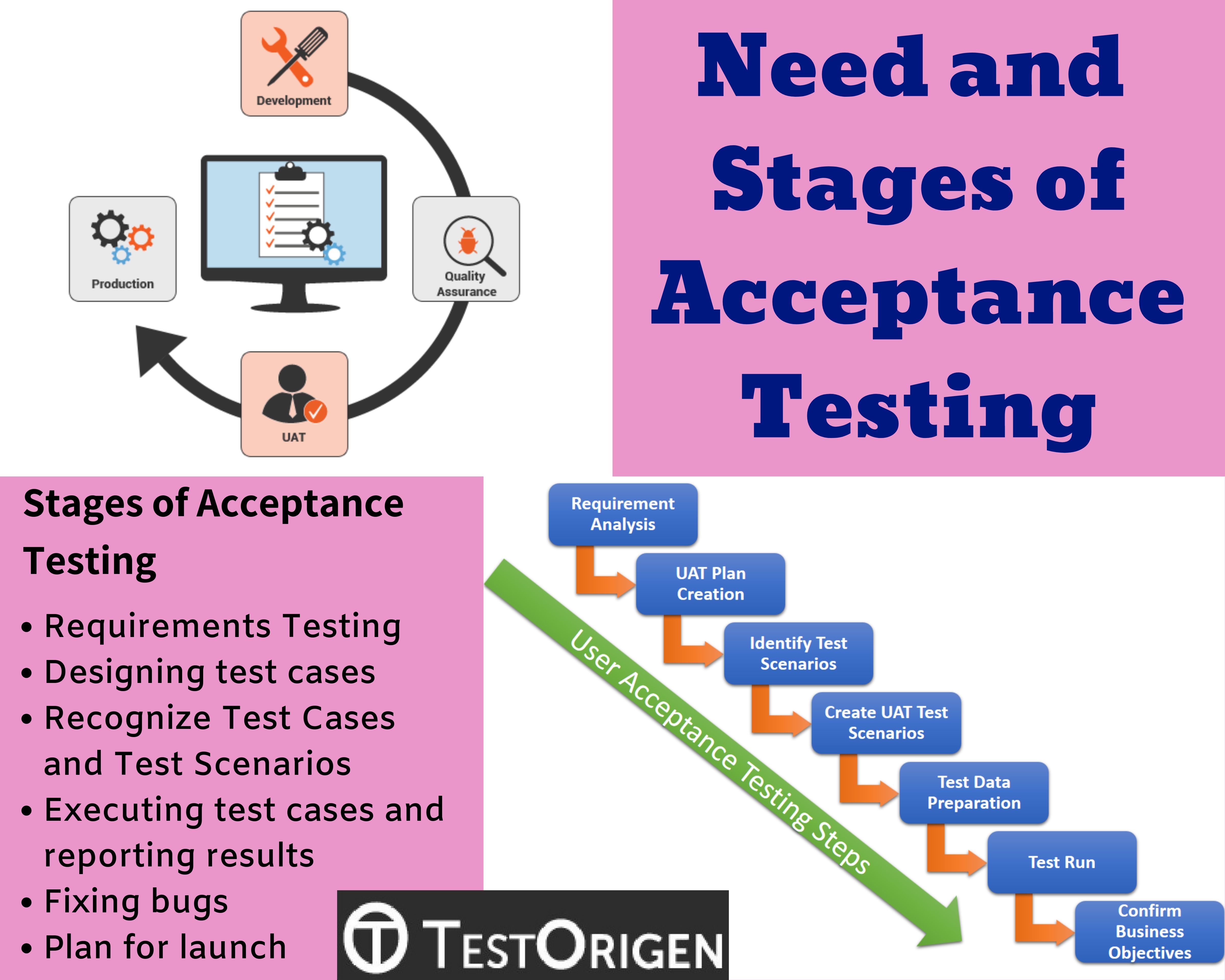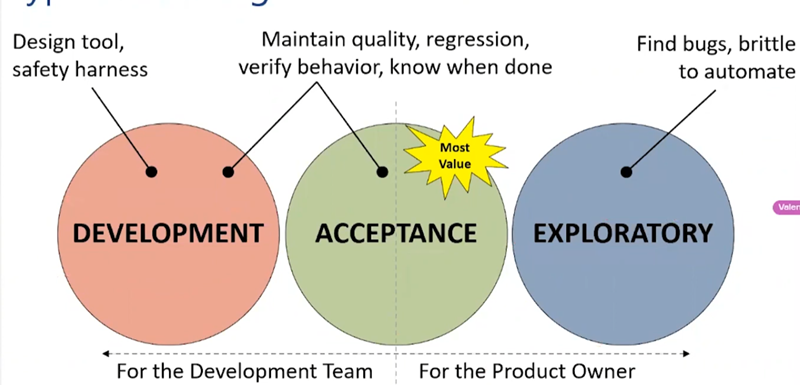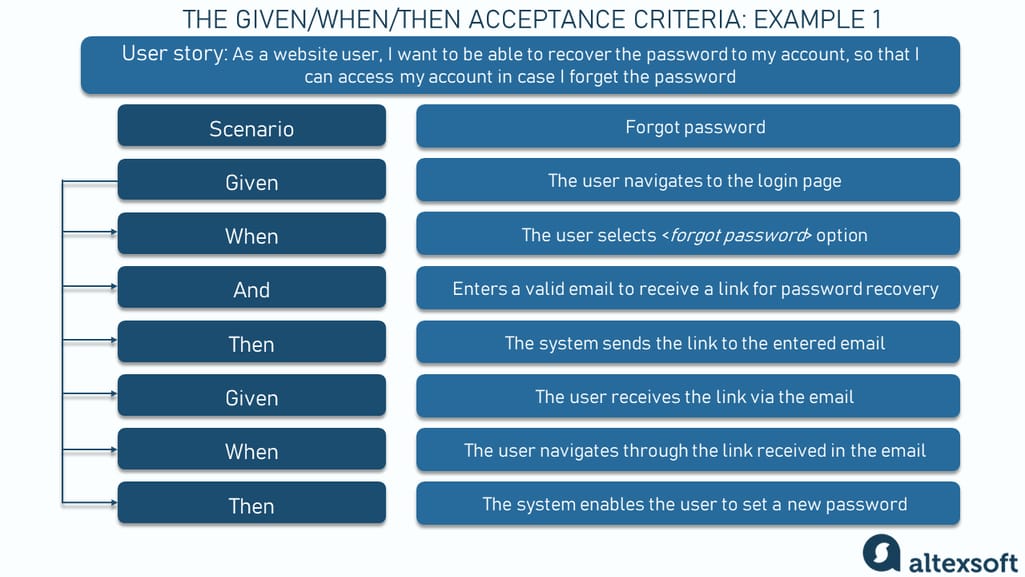Antwort What is done in acceptance testing? Weitere Antworten – What happens in acceptance testing
Acceptance testing is software testing that evaluates whether a system meets its business and user requirements. It is the final testing stage before a system is released to production. The main purpose of acceptance testing is to verify that a system: Meets all of its functional and non-functional requirements.Acceptance testing evaluates a product, prototype, or software application to make sure it is up to specifications and quality before putting into production. By trialing a product or piece of software before it is mass produced, bug fixes or other modifications can be carried out in a more cost-effective manner.Competitive product development
User acceptance testing not only checks for bugs or errors and helps assess how efficiently a product solves a specific problem statement. It gives a complete idea about how its core features and solutions are doing and how well they can meet specific requirements.
What are the 4 types of acceptance testing : vor 4 Tagen
Type of Acceptance Testing
- User Acceptance Tests (UAT)
- Business Acceptance testing (BAT)
- Contract Acceptance Testing (CAT)
- Regulations Acceptance testing (RAT)
- Operational Acceptance Testing (OAT)
- Alpha Testing.
- Beta Testing.
Why is acceptance testing done
Acceptance testing conducted at the site at which the product is developed and performed by employees of the supplier organization, to determine whether a component or system satisfies the requirements, normally including hardware as well as software.
How do I prepare for an acceptance test : What are the Stages of Acceptance Testing
- Planning phase. The stage involves assigning a dedicated UAT test manager to oversee the end-to-end process of UAT.
- Preparation of UAT test data and test environment.
- UAT test scheduling and management.
- Testing execution and defect management.
- UAT sign-off and reporting.
User Acceptance Testing (UAT): This involves verifying the user's requirements have been met. Business Acceptance Testing (BAT): Here, you assess whether the product meets the business goals set out in the design.
User acceptance testing is performed by the end-users. With that said, it is QA team that will be in charge of running user acceptance testing. They will write a complete UAT test plan, prepare a UAT environment that mirrors production, and write corresponding UAT test cases.
Why acceptance testing is done
Advantages of Acceptance Testing
It increases the satisfaction of clients as they test application itself. The quality criteria of the software is defined in an early phase so that the tester has already decided the testing points. It gives a clear view to testing strategy.We can see that the main difference between the two is that quality assurance ensures that the software is bug-free, while user acceptance testing ensures that the software provides users with the experience and usability they are looking for.Your client or end-users should be doing your UAT. These are the acceptance testing types: User Acceptance Testing (UAT): This involves verifying the user's requirements have been met. Business Acceptance Testing (BAT): Here, you assess whether the product meets the business goals set out in the design.
A few of them are listed below:
- #1) User Acceptance Testing (UAT)
- #2) Business Acceptance Testing (BAT)
- #3) Contract Acceptance Testing (CAT)
- #5) Operational Acceptance Testing (OAT)
- #6) Alpha Testing.
- #7) Beta Testing/Field Testing.
What is the difference between QA testing and acceptance testing : TLDR; QA or Quality Assurance is the act of testing a product to ensure it meets specified requirements. UAT or User Acceptance Testing is typically completed by an end-user, also referred to as beta testing. When most people think about quality assurance, they think about manufacturing.
Who normally executes UAT : Business users are the actual UAT performers. Key business users are needed for their business know-how on all phases of the UAT cycle – planning, execution, and evaluation and executing UAT before go-live.
Does QA write UAT test cases
Also, QA is performed by the testing team, while UAT is mostly conducted by actual product users. QA activities precede UAT but both are essential parts of the development process. UAT has other names, e.g., end-user testing, operational, application, beta testing, or validation but they describe the same thing.
End users
Who performs UAT End users normally perform user acceptance testing. They are the most effective group to test software in this form because they know exactly how the software will be used on a daily basis and what changes need to be made to be suitable for this day-to-day use.These are the acceptance testing types: User Acceptance Testing (UAT): This involves verifying the user's requirements have been met. Business Acceptance Testing (BAT): Here, you assess whether the product meets the business goals set out in the design.
What is the difference between QA and acceptance testing : TLDR; QA or Quality Assurance is the act of testing a product to ensure it meets specified requirements. UAT or User Acceptance Testing is typically completed by an end-user, also referred to as beta testing. When most people think about quality assurance, they think about manufacturing.





